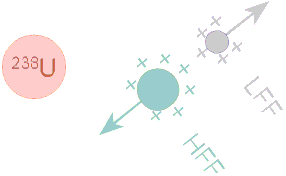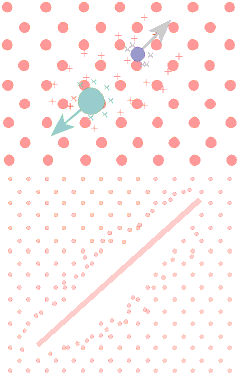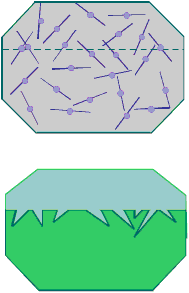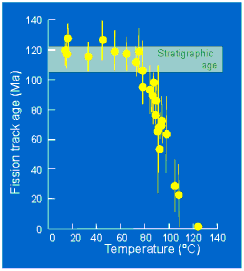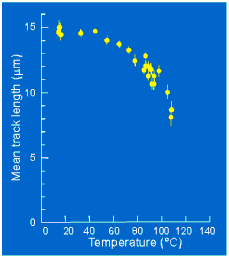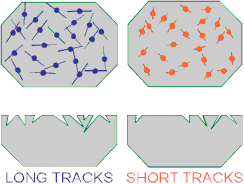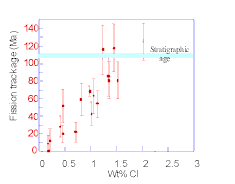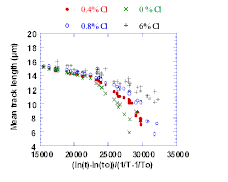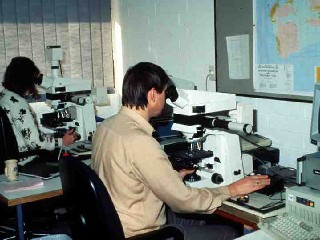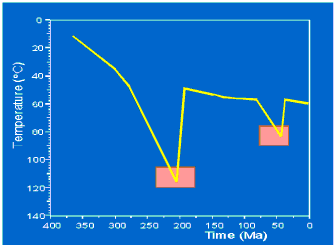 |
 |
 |
 |
 |
 |
||
 |
|||||||
Apatite Fission Track Analysis (AFTA®)
Key points:
Based on analysis of radiation damage trails ("fission tracks") within detrital apatite grains (extracted from sandstones and other clastic rocks)
|
Each fission track is created by spontaneous fission of a single atom of 238U
|
Fission tracks can be selectively dissolved and enlarged by etching in dilute nitric acid
|
| Etched spontaneous fission tracks in an apatite crystal. |
|
Fission track age
The number of tracks
in an apatite grain depends on:
Therefore in principle, if we measure the uranium content and the number of tracks, we can measure the time over which tracks have accumulated - the fission track age |
But if we measure fission track ages in
sub-surface samples, we find that at temperatures greater than ~70°C,
the ages are progressively reduced to zero at around 120°C.
|
Track length
The reduction in fission track age arises because the radiation damage constituting each fission track is progressively repaired, at a rate which increases with temperature. This repair is manifested as a decrease in the length of individual tracks.
|
The proportion of tracks intersecting the polished surface of an apatite grain depends on the track length, and therefore as track length is progressively reduced, so is the fission track age.
|
| Confined tracks in apatite. |
|
Compositional effects
Single grain fission track ages in a sample from a present-day temperature of ~95°C show a clear and consistent variation with Cl content:
|
Chlorine content exerts a significant control on fission track annealing rates in apatite, as also seen in laboratory experiments:
|
Apatite fission track analysis (AFTA®)
AFTA is based on three types of measurement:
- fission track age
- confined track lengths
- chlorine content
Cl content is measured in every grain in which either age or length data is collected. Grain locations are recorded using computer-controlled microscope stages, and archived for future reference. |
|
By modelling AFTA parameters through likely thermal history scenarios, we can define the range of temperature-time conditions giving predictions which are consistent with the observed data. |
|
Importance of chlorine content
Common detrital apatite grains in sedimentary rocks from around the world show significant variation in chlorine content, both within individual samples and between different samples
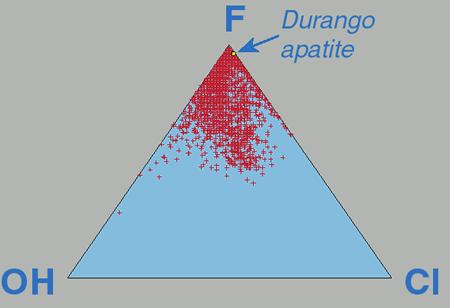 Apatite compositions - Ternary plot 4172 grains |
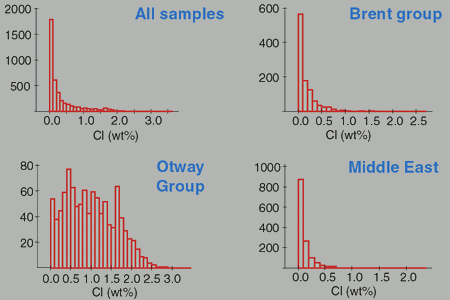 |
The kinetic model used to extract temperature-time solutions from our AFTA data explicitly takes into account the effect of Cl content on annealing rates.
Calibration of this kinetic model against data from simple geological situations confirms the validity of the model.
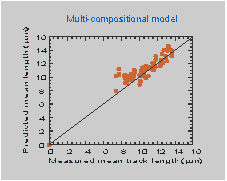
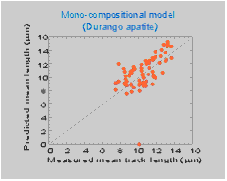
Use of a kinetic model that does not take compositional effects into account (above right) provides a very poor match with the calibration data.
